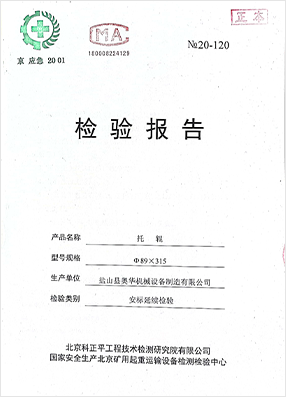 Afrikaans
Afrikaans  Albanian
Albanian  Amharic
Amharic  Arabic
Arabic  Armenian
Armenian  Azerbaijani
Azerbaijani  Basque
Basque  Belarusian
Belarusian  Bengali
Bengali  Bosnian
Bosnian  Bulgarian
Bulgarian  Catalan
Catalan  Cebuano
Cebuano  Corsican
Corsican  Croatian
Croatian  Czech
Czech  Danish
Danish  Dutch
Dutch  English
English  Esperanto
Esperanto  Estonian
Estonian  Finnish
Finnish  French
French  Frisian
Frisian  Galician
Galician  Georgian
Georgian  German
German  Greek
Greek  Gujarati
Gujarati  Haitian Creole
Haitian Creole  hausa
hausa  hawaiian
hawaiian  Hebrew
Hebrew  Hindi
Hindi  Miao
Miao  Hungarian
Hungarian  Icelandic
Icelandic  igbo
igbo  Indonesian
Indonesian  irish
irish  Italian
Italian  Japanese
Japanese  Javanese
Javanese  Kannada
Kannada  kazakh
kazakh  Khmer
Khmer  Rwandese
Rwandese  Korean
Korean  Kurdish
Kurdish  Kyrgyz
Kyrgyz  Lao
Lao  Latin
Latin  Latvian
Latvian  Lithuanian
Lithuanian  Luxembourgish
Luxembourgish  Macedonian
Macedonian  Malgashi
Malgashi  Malay
Malay  Malayalam
Malayalam  Maltese
Maltese  Maori
Maori  Marathi
Marathi  Mongolian
Mongolian  Myanmar
Myanmar  Nepali
Nepali  Norwegian
Norwegian  Norwegian
Norwegian  Occitan
Occitan  Pashto
Pashto  Persian
Persian  Polish
Polish  Portuguese
Portuguese  Punjabi
Punjabi  Romanian
Romanian  Russian
Russian  Samoan
Samoan  Scottish Gaelic
Scottish Gaelic  Serbian
Serbian  Sesotho
Sesotho  Shona
Shona  Sindhi
Sindhi  Sinhala
Sinhala  Slovak
Slovak  Slovenian
Slovenian  Somali
Somali  Spanish
Spanish  Sundanese
Sundanese  Swahili
Swahili  Swedish
Swedish  Tagalog
Tagalog  Tajik
Tajik  Tamil
Tamil  Tatar
Tatar  Telugu
Telugu  Thai
Thai  Turkish
Turkish  Turkmen
Turkmen  Ukrainian
Ukrainian  Urdu
Urdu  Uighur
Uighur  Uzbek
Uzbek  Vietnamese
Vietnamese  Welsh
Welsh  Bantu
Bantu  Yiddish
Yiddish  Yoruba
Yoruba  Zulu
Zulu Idlers and Rollers Understanding Their Role in Mechanical Systems and Applications
Idlers and Rollers Essential Components in Mechanical Systems
In mechanical engineering, idlers and rollers play a pivotal role in enhancing the efficiency and functionality of various systems. These components are commonly used in conveyor systems, machinery, and material handling applications, serving as a means to facilitate movement, reduce friction, and improve the overall performance of mechanical operations.
Understanding Idlers and Rollers
Idlers are mechanical devices that do not drive the system but serve to support belts or chains, helping to maintain their tension and alignment. Typically, idlers are positioned in areas where material needs to be moved without imparting energy. They can be found in conveyor systems where they support the weight of the conveyor belt, allowing it to run smoothly over the pulleys and ensuring that the materials being transported do not sag or slide off.
Rollers, on the other hand, are designed to facilitate movement and are often connected to a drive system. When activated, rollers move objects efficiently along a surface. They convert rotational energy into linear motion, making them vital in scenarios where materials need to be transported over a distance. Rollers often come in various types, including gravity rollers, powered rollers, and live rollers, each designed for specific applications.
The Importance of Idlers and Rollers in Industry
The functionality of idlers and rollers is critical in numerous industrial applications
. In manufacturing, for instance, conveyor systems equipped with robust idlers and rollers enhance productivity by enabling continuous material flow. This not only decreases the time taken to move products from one stage of production to another but also minimizes labor costs, as less manual handling is required.idlers and rollers

Moreover, idlers and rollers contribute significantly to the longevity of conveyor systems. By reducing friction between the moving parts, these components lower the wear and tear on belts and chains. This not only extends the lifespan of the machinery but also decreases maintenance costs and downtime, allowing for smoother operations and better resource management.
Choosing the Right Idlers and Rollers
Selecting the appropriate idlers and rollers for a specific application requires careful consideration of various factors. Load capacity, speed, and environmental conditions all play a role in determining the best fit. For instance, heavy-duty applications might necessitate idlers and rollers constructed from high-strength materials to withstand the stress without deforming or failing.
Additionally, the type of material being transported can influence the choice. For instance, materials that generate heat or residues require specialized rollers designed to manage such conditions effectively. Furthermore, considerations such as noise reduction and maintenance requirements should also guide the selection process, ensuring that the chosen components align well with operational needs.
Conclusion
In conclusion, idlers and rollers are indispensable components in the realm of mechanical systems. Their ability to facilitate movement, maintain tension, and reduce friction enhances the efficiency of machinery across various industries. By carefully selecting the appropriate types of idlers and rollers for specific applications, businesses can optimize their operations, reduce costs, and improve the overall durability of their machinery. As technology advances, the development of more efficient and specialized idlers and rollers will continue to play a significant role in driving industrial innovation and productivity.
-
Revolutionizing Conveyor Reliability with Advanced Rubber Lagging PulleysNewsJul.22,2025
-
Powering Precision and Durability with Expert Manufacturers of Conveyor ComponentsNewsJul.22,2025
-
Optimizing Conveyor Systems with Advanced Conveyor AccessoriesNewsJul.22,2025
-
Maximize Conveyor Efficiency with Quality Conveyor Idler PulleysNewsJul.22,2025
-
Future-Proof Your Conveyor System with High-Performance Polyurethane RollerNewsJul.22,2025
-
Driving Efficiency Forward with Quality Idlers and RollersNewsJul.22,2025





























